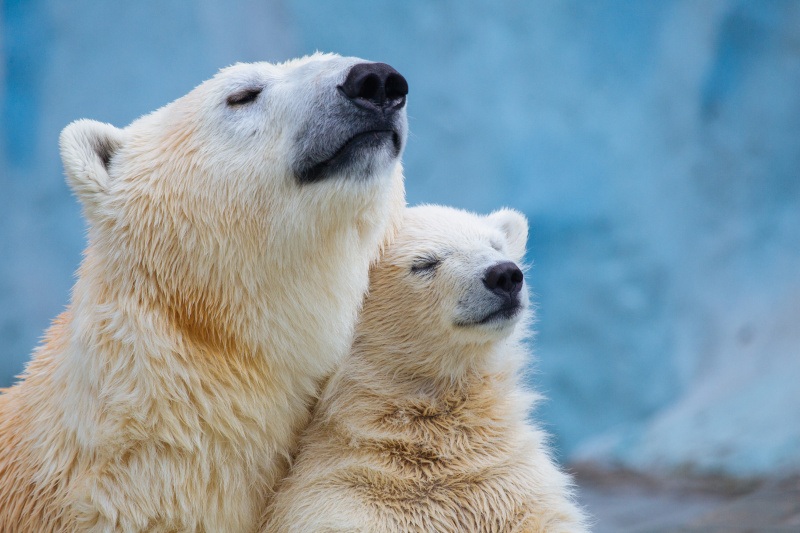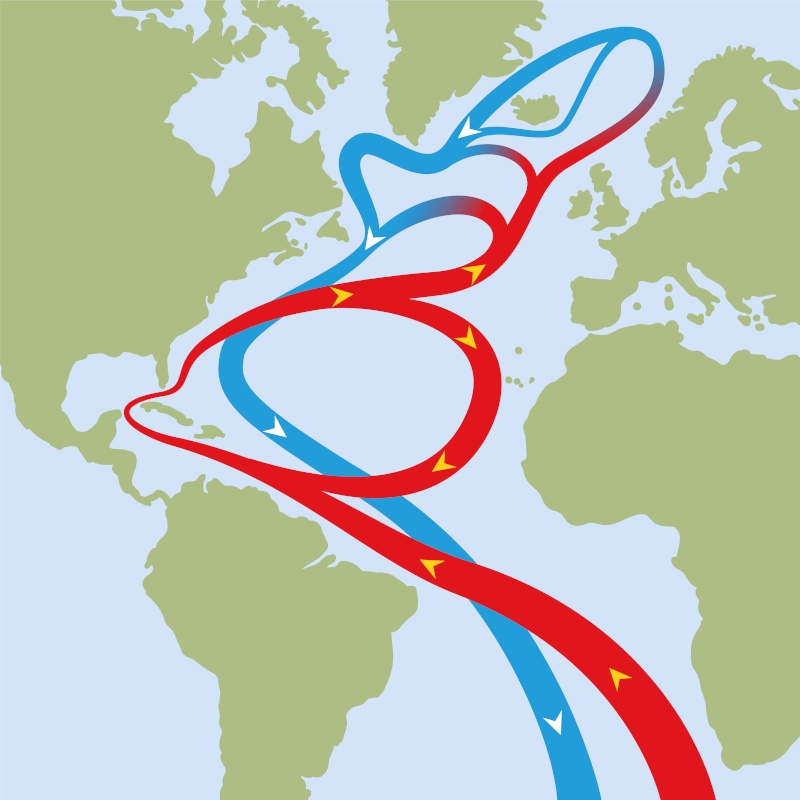Did you know that an amateur scientist first noted the warming effect of carbon dioxide in the atmosphere in 1856? With so much noise about the climate, it’s hard to sort fact from fear. Here, we break down a few important topics.
With so much news about the climate crisis emerging daily, it can be easy to suffer from information overload and a rising sense of eco-anxiety. From recent research predicting the collapse of the Gulf Stream to images of starving polar bears, this article tackles a few burning climate questions, and in doing so, finds that we probably could have saved ourselves if we listened to the science two centuries ago.
Is there time to save the polar bears?
Listed by the WWF as a vulnerable species, polar bears have long been the poster children of climate change. This is because their Arctic habitat has seen the most drastic changes due to global heating, and of course they are very cute.
Arctic sea ice is being lost at a rate of 13pc per decade over the last 30 years, and the oldest and thickest ice has declined by 95pc. Scientists predict that by the middle of this century, we could see almost ice-free Arctic summers. Most of a polar bear’s time is spent on sea ice, where they hunt (mainly marine mammals), rest, breed and care for their young. The loss of the sea ice presents serious challenges to their ability to survive.
Recent research published in Nature Communications reveals the dire extent to which polar bears are suffering from the loss of sea ice.
Researchers followed 20 polar bears in Canada’s Hudson Bay over a three-year period and found that, when sea ice is low, the bears venture in land or swim long distances to look for food. The bears were seen eating grasses, berries, rodents and other animals, but in spite of their resourcefulness, there were not able to take in as many calories as they get from eating seals. Over the study period, 19 of the 20 bears lost weight.

Image: © A.Lukin/Stock.adobe.com
“Although polar bears on land exhibit remarkable behavioural plasticity, our findings reinforce the risk of starvation, particularly in subadults, with forecasted increases in the onshore period,” the researchers concluded.
The conservationist group, Polar Bears International, states on their website that even though the problem of saving polar bears may seem overwhelming, the answers are already there.
Unsurprisingly, they argue: “The key to saving sea ice for polar bears and getting the climate back to functioning the way it should is to get away from using fossil fuels for energy all together.”
They suggest five action to help polar bears: vote with the climate in mind; support renewable energy options; talk about climate issues and solutions; use clean transport; and build a greener future in whatever way that you can.
Is the Gulf Stream about to collapse?
The Gulf Stream is part of a complex system called the Atlantic Meridional Overturning Circulation (AMOC), which transports water throughout the world’s oceans.
The Gulf Stream takes warm water from the Florida straits to Newfoundland, where it travels across the ocean to the Norwegian Sea where it cools. The cold, salty water here is denser than the warmer, fresher water and so sinks below the warm water and flows along the sea floor towards the Atlantic Ocean and onto the Indian and Pacific oceans. It mixes with warmer water and returns to the surface, thus continuing a cycle.
This process plays a key role in our climate because it transports heat from the tropics to the Arctic.
Without the Gulf Stream, Northern Europe would have much colder temperatures.
The reason that people fear the collapse of the AMOC is because of the increased rate of melting of the Greenland ice sheet, which is releasing fresh water into the ocean. This less dense water could slow down the sinking process and therefore slow down the current. Not only would this change ocean temperatures, but also air temperatures and rainfall patterns would be altered.
A recent study estimated that the AMOC could collapse as soon as 2025; however, many scientists have reservations about the research, arguing that it makes a number of assumptions about the AMOC.

Image: © Peter Hermes Furian/Stock.adobe.com
Physical oceanographer Dr Robert Todd said that the fear about the collapse of the Gulf Stream is due to an oversimplification of the currents that drive global climate.
“The Gulf Stream plays a role in the AMOC, but it is also distinct from the AMOC,” explained Todd. “It’s one arm of a multi-tiered system that circulates water horizontally and vertically throughout the Atlantic Ocean.”
An important factor in these currents, Todd pointed out, is the winds that blow from west to eat across temperate regions and frow east to west in the tropics. This, combined with the Earth’s rotation, causes water to move in a clockwise direction.
“The Gulf Stream will not shut down, but it is not immune to climate change,” said Todd. He noted the current is warming and moving closer to the coast, which could harm marine life, and that the rate of water movement may change, but he thinks that it will continue to flow.
Is carbon capture and storage going to save us?
Carbon capture, utilisation and storage (CCUS) is the removal of carbon dioxide from the atmosphere or more commonly large sources, such as power plants or industrial facilities, and used or buried deep underground.
Proponents believe that CCUS can allow us to maintain industrial production and economic growth while reducing emissions. The UN COP28 agreement included reference to CCUS as being helpful in certain sectors.
However, this technology is currently expensive and underdeveloped. The British Geological Survey argues that the tech will be slow to improve unless there is a financial incentive, for example fines for CO2 emissions.
Regulatory frameworks for CO2 storage are still being developed. A European directive says that issues such as leakage and maintenance of storage sites need to be addressed.
In February, the EU published the Industrial Carbon Management Strategy for scaling up carbon management, which proposes a single market for CO2 in Europe to make investment in carbon management tech more attractive.
The International Energy Agency (IEA) released a report last November which criticised the oil and gas industry’s emphasis on CCUS.
“The industry needs to commit to genuinely helping the world meet its energy needs and climate goals – which means letting go of the illusion that implausibly large amounts of carbon capture are the solution,” said IEA executive director Faith Birol.
A crucial point in this report is that while CCUS can form part of the efforts to get to net-zero emissions by 2050, it “cannot be used to maintain the status quo”.
“If oil and natural gas consumption were to evolve as projected under today’s policy settings, limiting the temperature rise to 1.5 degrees Celsius would require an entirely inconceivable 32bn tonnes of carbon capture for utilisation or storage by 2050, including 23bn tonnes via direct air capture.
“The amount of electricity needed to power these technologies would be greater than the entire world’s electricity demand today.”
When did people first notice the greenhouse effect?
The greenhouse effect is the way that greenhouse gases (GHGs) trap the Sun’s heat in the Earth’s atmosphere. For the conditions to sustain life, we need a certain balance of these GHGs in our atmosphere.
Until recently, the Irish scientist John Tyndall (1820-1893) was credited with first discovering in 1859 that carbon dioxide heats up the atmosphere.
However, three years before Tyndall made his discovery a woman scientist called Eunice Foote (1819-1888) wrote a paper titled ‘Circumstances affecting the heat of the Sun’s rays’ for the eighth annual meeting of the American Association for the Advancement of Science. Foote noted that when the sun shines on carbon dioxide in a closed container, such as the Earth’s atmosphere, the temperature in the container increases.
As a result, Foote speculated that an atmosphere of carbon dioxide “would give to our Earth a high temperature”.
“If, as some suppose, at one period of its history the air had mixed with it a larger proportion than at present, an increased temperature … must have necessarily resulted,” Foote argued.
Tyndall, however, was able to develop more sophisticated experiments than Foote and found that Earth’s greenhouse gas effect comes from water vapour and gases such as carbon dioxide that absorb radiant heat coming from the Earth’s surface.
Unlike other atmospheric gases, greenhouse gases are opaque to outgoing infrared radiation, thereby trapping the heat in the atmosphere where it gets absorbed and heats up the Earth’s surface.
Researchers don’t think Tyndall was aware of Foote’s work; though it’s doubtful he rated women scientists, having once stated in a letter that women have “more feeling and less intellect than men”. He also opposed women’s suffrage.
Foote, on the other hand, was a proud women’s rights campaigner. Remarkably, her contribution to climate science would have gone unrecognised were it not for the work of amateur historian Raymond Sorenson.
In 2011, Sorenson found a journalist’s report about Foote’s paper in the Annual of Scientific Discovery (1857). In an article about his discovery, Sorenson writes: “Despite the absence of a formal publication, it is clear that Eunice Foote deserves credit for being an innovator on the topic of CO2 and its potential impact on global climate warming.”
Inaction two centuries later
Given how early in the industrial revolution scientists including Foote and Tyndall noted the links between GHGs and global warming, it is striking how long long it took for this information to become widely known.
A groundbreaking 2015 report from Inside Climate News and others revealed that as early as 1977 top executives at the major oil company Exxon were warned by their own scientists in simple terms that carbon dioxide released from burning fossil fuels was heating the planet and could endanger humanity. In response, Exxon launched a decades-long campaign of climate denial and blocked US government and international actions to limit GHGs.
Just a couple of weeks ago the city of Chicago announced that it is suing BP, Chevron, Shell, Exxon Mobil and other oil companies for allegedly discrediting climate science and spreading disinformation.
Since 1995, the United Nations has held annual climate conferences, COPs, with the stated aim of preventing dangerous human-induced climate change by limiting GHGs. At the latest conference, COP28, countries finally agreed to “phase down” all fossil fuels. In nearly 30 years of meetings, the phasing out of all fossil fuels, the most crucial factor for limiting global heating, has not been included in the final agreements.
Find out how emerging tech trends are transforming tomorrow with our new podcast, Future Human: The Series. Listen now on Spotify, on Apple or wherever you get your podcasts.

